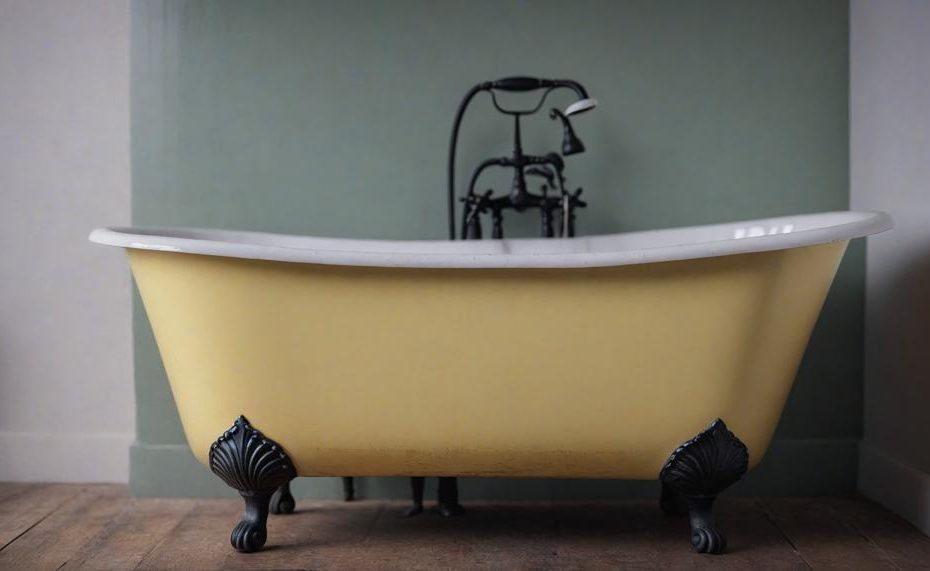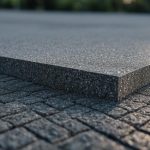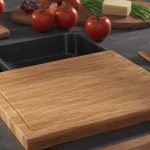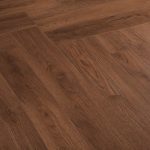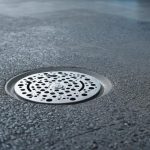If you’ve ever dreamed of soaking in vintage luxury, a cast iron clawfoot tub might be at the top of your wish list. These tubs, symbols of opulence since the late 19th century, are more than just bathroom fixtures—they’re pieces of history. But how much is a cast iron clawfoot tub worth today? The answer isn’t straightforward, as the value can vary significantly based on several factors.
Whether you’re a collector of antique home furnishings or simply seeking to add a touch of elegance to your bathroom, understanding the worth of a clawfoot tub is essential. Here are the key factors that determine the value of a cast iron clawfoot tub:
- Rarity and Authenticity: Genuine antique clawfoot tubs can fetch thousands of dollars, especially if they’re in good condition.
- Material: Tubs made of cast iron or precious metals are typically more valuable than those with porcelain or enamel coatings.
- Condition and Size: The overall state of the tub, including any wear and tear, and its dimensions, significantly impact its price.
- Restoration Costs: Refinishing an antique tub can cost around $1000, but this can enhance its value and appeal.
- Age and Uniqueness: Older, unique designs are generally more sought after and command higher prices.
Dive into the world of antique clawfoot tubs and discover what makes them such prized possessions. From the thrill of finding an authentic piece to the satisfaction of restoring it to its former glory, the journey is as rewarding as the luxurious baths you’ll enjoy.
Contents
Brief History of The Clawfoot Vintage Tub
The origin of the clawfoot vintage tub dates back to the late 19th century when it first became a symbol of luxury and sophistication in high-end homes. These tubs were designed to offer a lavish bathing experience, primarily enjoyed by the wealthy elite.
The first clawfoot tubs were made of cast iron and coated with porcelain enamel, giving them a durable yet elegant finish.
Evolution and Value Over Time
| Period | Characteristics | Value Changes |
| Late 19th to Early 20th Century |
|
Highly valued for luxury and craftsmanship |
| Mid 20th Century |
|
Value decreased as modern, cheaper alternatives emerged |
| Late 20th to 21st Century |
|
Value increased due to rarity and restored aesthetics |
Factors Influencing Value
- Authenticity and Age: Authentic antique tubs, especially those from renowned manufacturers, are highly prized.
- Condition: Tubs in good condition or professionally restored ones fetch higher prices. Restoration costs can range around $1,000.
- Material: Cast iron and precious metal tubs are more valuable than their porcelain or enamel counterparts.
- Design and Manufacturer Markings: Unique designs and recognizable manufacturer marks significantly boost value.
Different Styles of the Vintage Clawfoot Tub
The different styles of vintage clawfoot tubs significantly impact the value of a cast iron clawfoot tub. Here are the primary styles:
- Classic Roll Rim (or Roll Top): This style features a rounded edge, providing a timeless and elegant look. It’s the most common and recognisable style. Its classic appeal and historical significance can enhance the tub’s value, especially if it retains its original features.
- Slipper Tub: Designed with one end raised and sloped for lounging, slipper tubs offer superior comfort. The high back is not only visually appealing but also practical, making these tubs highly desirable and often more valuable due to their luxurious design.
- Double Slipper Tub: Both ends of this tub are raised, allowing two people to recline comfortably. This symmetrical design adds to its aesthetic appeal and functionality, thus increasing its market value.
- Double Ended Tub: Similar to the roll rim but with both ends rounded, this style offers a balanced look and the convenience of reclining at either end. Its unique design can make it more valuable than standard roll rim tubs.
- Pedestal Tub: Unlike the clawfoot, pedestal tubs rest on a solid base. While they still evoke a vintage feel, their different construction can influence value based on buyer preference and historical authenticity.
| Style | Features | Impact on Value |
| Classic Roll Rim | Rounded edges, timeless design | High due to historical significance and classic appeal |
| Slipper Tub | One end raised and sloped for lounging | Higher due to luxurious and comfortable design |
| Double Slipper Tub | Both ends raised, symmetrical design | Very high due to aesthetic and functional appeal |
| Double Ended Tub | Both ends rounded, balanced look | Higher due to unique design and convenience |
| Pedestal Tub | Solid base, vintage feel | Varies based on buyer preference and authenticity |
Factors such as age, condition, and originality also play crucial roles in determining the value of a cast iron clawfoot tub. Restored or well-maintained tubs fetch higher prices, while those with original fixtures and minimal alterations are particularly prized by collectors.
Clawfoot Tub by Materials
Clawfoot Tub by Materials
The most common materials used to make clawfoot tubs include porcelain-enameled cast iron, acrylic, copper, stone resin, and fiberglass. Each material offers unique properties that affect the tub’s durability, weight, heat retention, and overall value.
| Material | Properties | Effect on Value |
| Porcelain-enameled cast iron | Heavy, durable, excellent heat retention, classic look | High value; antique models can be particularly valuable, ranging from £400 to £1,200, while new ones can cost between £800 and £3,200. |
| Acrylic | Lightweight, easier to install, various styles available | Moderate value; typically less expensive than cast iron, costing around £500 to £1,200. |
| Copper | Distinctive aesthetic, excellent heat retention, antimicrobial | High value; unique look can increase price significantly, with costs ranging from £1,500 to £4,000. |
| Stone Resin | Extremely durable, high heat retention, heavy | High value; luxury material, can be quite expensive, usually starting at £2,000. |
| Fiberglass | Lightweight, less durable, economical | Low to moderate value; the least expensive option, ranging from £300 to £800. |
Porcelain-enameled cast iron clawfoot tubs, especially antique ones, are highly prized for their durability and classic appeal. These tubs are heavy, typically weighing between 200 to 400 pounds, which adds to their substantial feel and longevity. The porcelain enamel provides a smooth, glossy finish that is both attractive and easy to clean. However, the weight of cast iron tubs can make installation more challenging and costly, often requiring reinforced flooring and professional installation.
The value of a cast iron clawfoot tub is influenced by its condition, age, and style. Antique models, particularly those in good condition with original fixtures, can command high prices in the market. For instance, a well-maintained vintage clawfoot tub can range from £400 to £1,200, while a new cast iron clawfoot tub can cost between £800 and £3,200, depending on the features and design.
How to Identify Antique Clawfoot Tub Worth Money
Answer: Determining the value of a cast iron clawfoot tub hinges on several key factors, including its age, condition, size, and material. Here are the details to consider:
- Age and Authenticity
- Antique clawfoot tubs from the late 19th to early 20th centuries are typically more valuable due to their rarity and historical significance.
- Look for manufacturer markings or stamps, which can often be found on the bottom of the tub, to verify its age and authenticity.
- Condition
- Excellent Condition: No visible cracks, chips, or rust. Original fixtures and feet are intact and in good condition.
- Good Condition: Minor wear and tear, such as small chips or surface rust, but no major damage.
- Fair Condition: Noticeable wear, such as larger chips, cracks, or significant rust. Restoration may be required.
- Poor Condition: Extensive damage, missing parts, or heavy rust. May require significant restoration, reducing its immediate value.
- Size and Customization
- Larger tubs (60 inches or more) typically command higher prices due to their spaciousness and luxury appeal.
- Customization options, such as unique finishes or bespoke fixtures, can significantly increase the tub’s value.
- Material and Finish
- Cast iron tubs with original porcelain enamel finishes are more valuable than those with newer coatings.
- Precious metal finishes, such as nickel or copper, can add to the value.
| Factor | Details | Impact on Value |
| Age and Authenticity | Late 19th to early 20th century; verified manufacturer markings | Higher value due to rarity |
| Condition | From excellent (no damage) to poor (extensive damage) | Excellent condition fetches higher prices; poor condition lowers value |
| Size and Customization | 60 inches or more; unique finishes and fixtures | Larger and customized tubs are more valuable |
| Material and Finish | Original porcelain enamel; precious metal finishes | Original and high-quality finishes increase value |
- Restoration and Maintenance
- Restored tubs can regain their value, but the cost of refinishing, which averages around $1,000, should be factored into the overall value assessment.
- Regular maintenance and proper care can preserve the tub’s condition, maintaining its value over time.
- Market Trends
- The demand for antique clawfoot tubs fluctuates with trends in interior design and home renovation. Keeping an eye on market trends can help in determining the best time to buy or sell.
Determining the Age of Your Clawfoot Tub
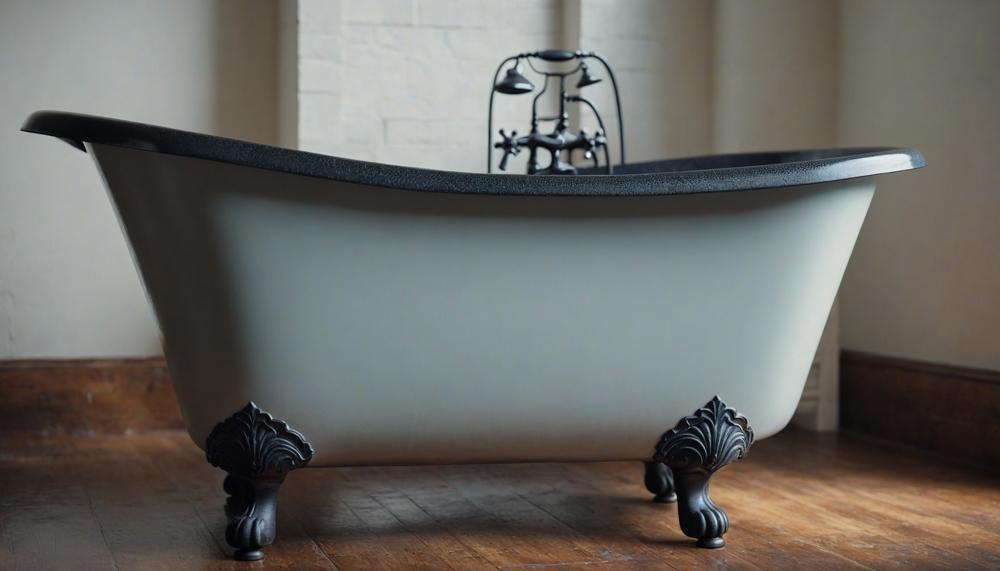
To accurately determine the age of your clawfoot tub, start by looking for a manufacturer’s stamp. This is usually found on the outside or the bottom of the tub. Here’s a detailed guide to help you identify its age:
- Check for Manufacturer’s Stamp:
- Location: Look at the outside or bottom of the tub.
- Details: The stamp often includes the date of manufacture.
- Example: A stamp reading “1931” clearly indicates the tub was made in that year.
- Material and Construction:
- Original Tubs: These are typically made of cast iron coated with porcelain enamel.
- Modern Replicas: Made from acrylic or fiberglass.
- Style and Features:
- Slipper Tubs: These have a raised end for back support, popular in older models.
- Double-rounded Ends: Another sign of an older tub style.
- Feet Style:
- Original Feet: If the feet are original and match the style of the tub, it indicates authenticity and age.
- Added or Mismatched Feet: Could suggest the tub is older and has been restored.
- Absence of Stamp:
- Mid-20th Century: Tubs without stamps might be from the mid-20th century.
- Older Custom-Made: Older custom tubs often lack faucet drillings and stamps.
- Special Cases:
- European Tubs: Occasionally, European tubs were retrofitted with new feet, indicating greater age and value.
Here is a summary in table format for easy reference:
| Clue | Description | Age Indication |
| Manufacturer’s Stamp | Found on outside or bottom; includes date | Directly indicates manufacture year |
| Material | Cast iron with porcelain enamel (original); acrylic or fiberglass (modern) | Original vs. replica distinction |
| Style | Slipper tubs, double-rounded ends | Older styles |
| Feet | Original feet match style; added feet suggest restoration | Authenticity and potential age |
| No Stamp | Mid-20th century or older custom-made tubs | Lack of faucet drillings and stamps |
| European Retrofitting | Old European tubs with new feet | Potentially very old and valuable |
Where to Sell Antique Clawfoot Tub
Answer: You can sell your antique clawfoot tub through various avenues to get the best price, depending on its condition and your location. Here are some effective options:
| Platform | Details | Link |
| Online Marketplaces | Websites like eBay and Craigslist allow you to reach a wide audience. Ensure you provide detailed descriptions and high-quality photos to attract serious buyers. | eBay, Craigslist |
| Specialized Antique Dealers | Contact local antique dealers who specialise in bathroom fixtures. They can appraise your tub and offer a fair price. Make sure the tub is thoroughly cleaned before showing it. | Local listings or directories |
| Architectural Salvage Yards | These places often seek antique fixtures like clawfoot tubs. They might buy directly from you or offer a consignment arrangement. | Local salvage yards |
| Online Antique Platforms | Websites like 1stdibs and Chairish cater to antique enthusiasts and might offer a higher price point for well-preserved tubs. | 1stdibs, Chairish |
| Social Media and DIY Groups | Posting in groups dedicated to home improvement, DIY projects, or antiques on Facebook and Instagram can connect you with interested buyers. | Facebook, Instagram |
| Classified Ads | Place an ad in local classified magazines like the Paper Shop in Pennsylvania. These ads can target a niche audience that appreciates vintage items. | Paper Shop |
Maximise your tub’s appeal by giving it a thorough cleaning and ensuring it’s in the best possible condition before listing it.
Bottom Line
Bottom Line: The value of a cast iron clawfoot tub hinges on several key factors, which can be meticulously assessed to determine its worth. Here are the primary determinants and methods for accurate valuation:
Factors Determining Value:
| Factor | Description | Details |
| Rarity and Elegance | Unique and rare designs enhance value. | Antique tubs with intricate designs or historical significance are more valuable. |
| Materials Used | Material composition affects worth. | Cast iron tubs are typically more valuable than those made from porcelain or enamel. |
| Age and Condition | Older and well-preserved tubs fetch higher prices. | Signs of wear, such as fading or yellowing, can diminish value, whereas well-maintained tubs are prized. |
| Authenticity | Original parts versus replacements. | Genuine antique clawfeet add significant value compared to modern replacements. |
| Size and Design | Dimensions and aesthetic appeal influence price. | Larger, artistically designed tubs in good condition are more valuable, though transport and installation costs must be considered. |
Accurate Assessment Methods:
- Check for Signs of Aging:
- Inspect the tub for fading, yellowing, or other age-related wear.
- Verify Authenticity:
- Ensure that the clawfeet and other features are original antiques rather than later additions.
- Examine for Repairs or Restorations:
- Look for evidence of repairs or restorations, which can either detract from or enhance the tub’s value, depending on quality.
- Research Age, Rarity, and Condition:
- Use online resources and antique guides to compare your tub with others of similar age and design. Authenticity and rarity can be verified through historical records or expert appraisals.
- Consult Experts and Online Platforms:
- Engage with antique dealers or appraisers who specialize in vintage bathroom fixtures. Online platforms like Old House Treasures can offer valuable insights and comparisons.
Conclusion
Dreaming of a vintage luxury bath? A cast iron clawfoot tub is the epitome of elegance and historical charm. These timeless fixtures, first popularized in the late 19th century, remain highly sought after today. But determining their worth isn’t a simple equation.
Several factors influence the value of a cast iron clawfoot tub. Authenticity and rarity are paramount—genuine antiques in good condition can fetch thousands of dollars. The material also plays a crucial role; cast iron and precious metals are particularly prized over porcelain or enamel coatings. The condition and size of the tub significantly affect its market price, with well-preserved, larger tubs generally commanding higher prices. Restoration costs, typically around $1000, can enhance a tub’s appeal and value, transforming a worn piece into a coveted treasure.
Age and uniqueness also contribute to a tub’s worth. Older, distinct designs often attract higher bids due to their historical significance. Modern trends see a resurgence in the popularity of these tubs, not just for their aesthetic appeal but also for their enduring quality.
Whether a classic roll rim, a luxurious slipper tub, or a stately pedestal style, each design has its unique allure and market value.
